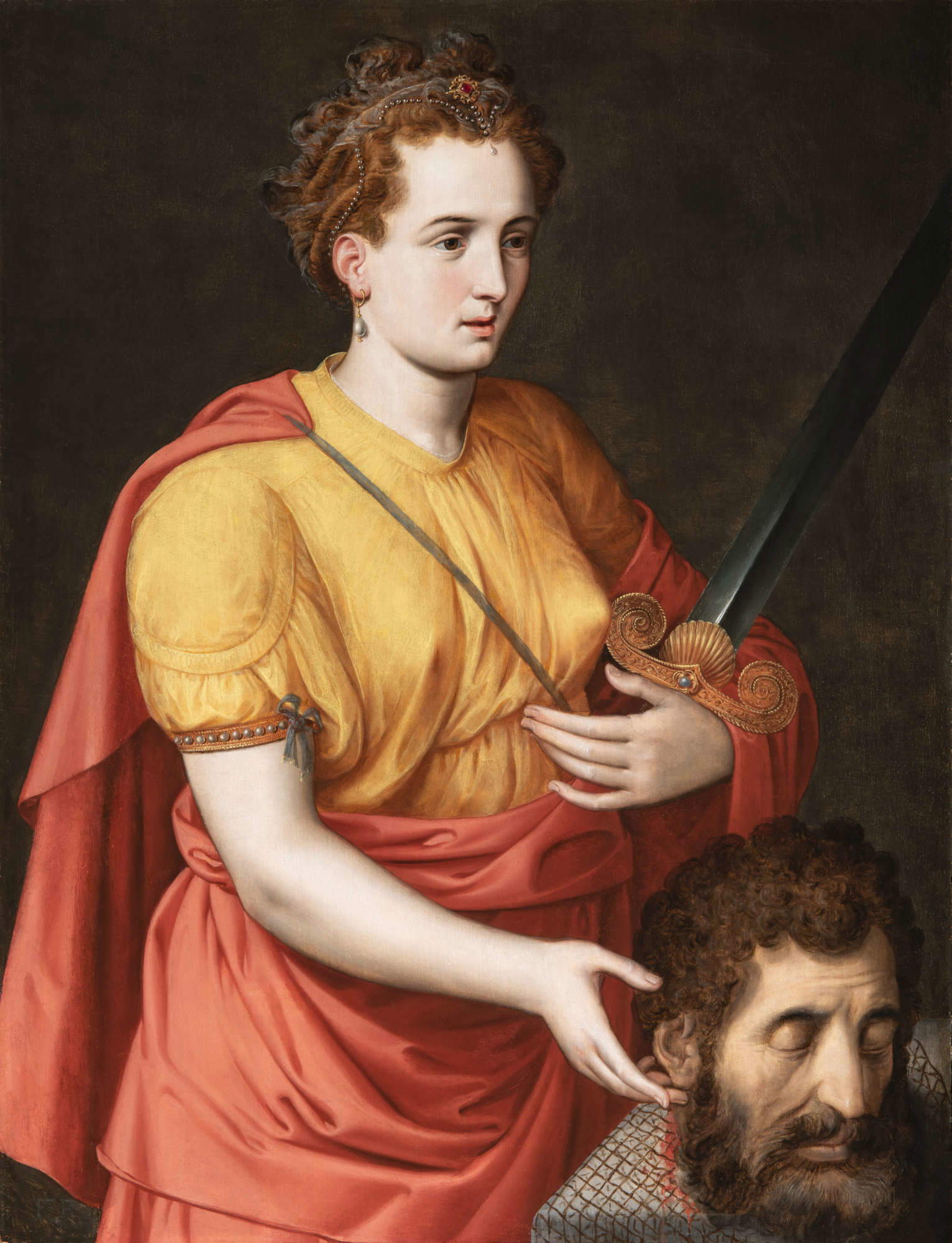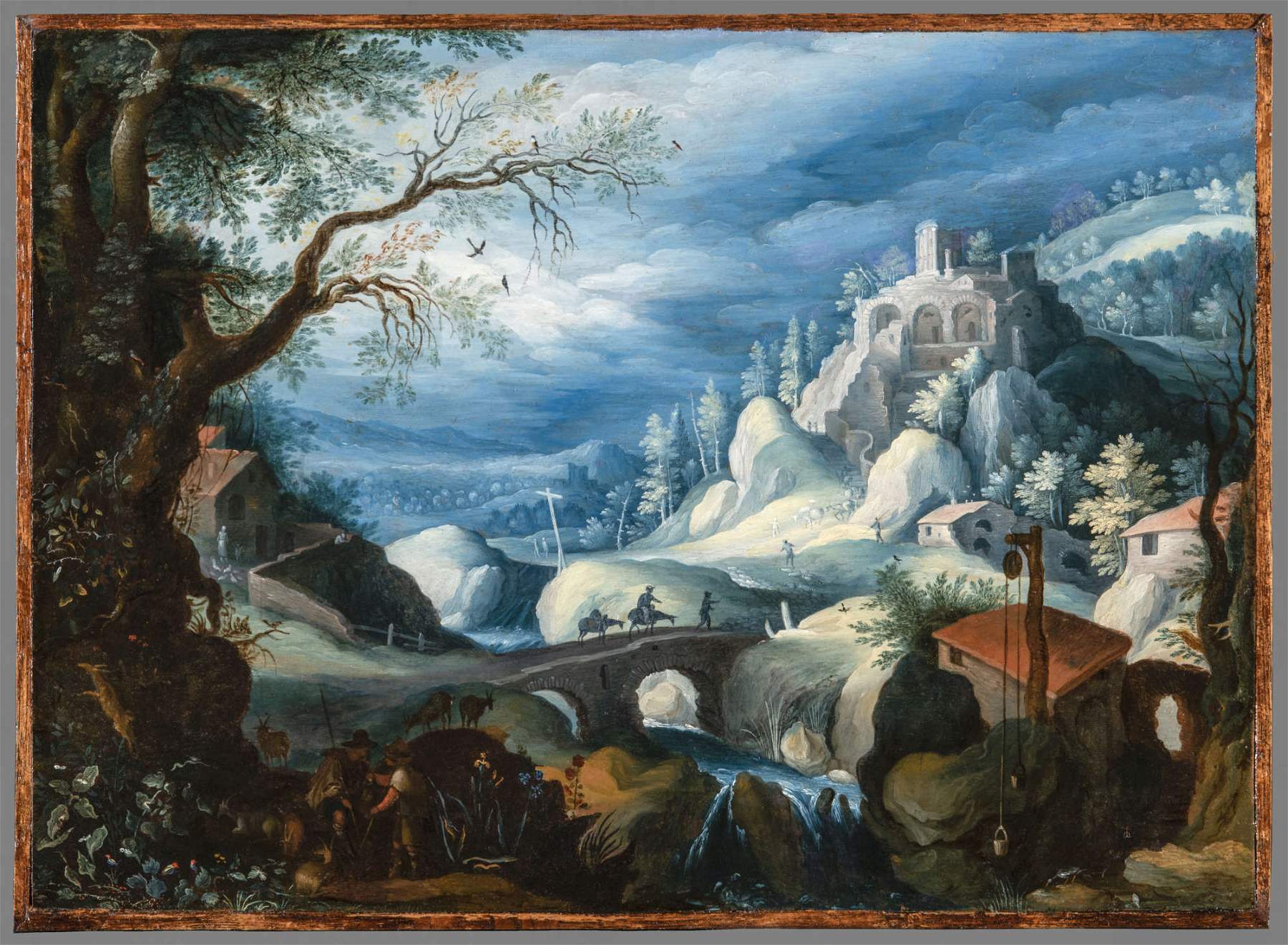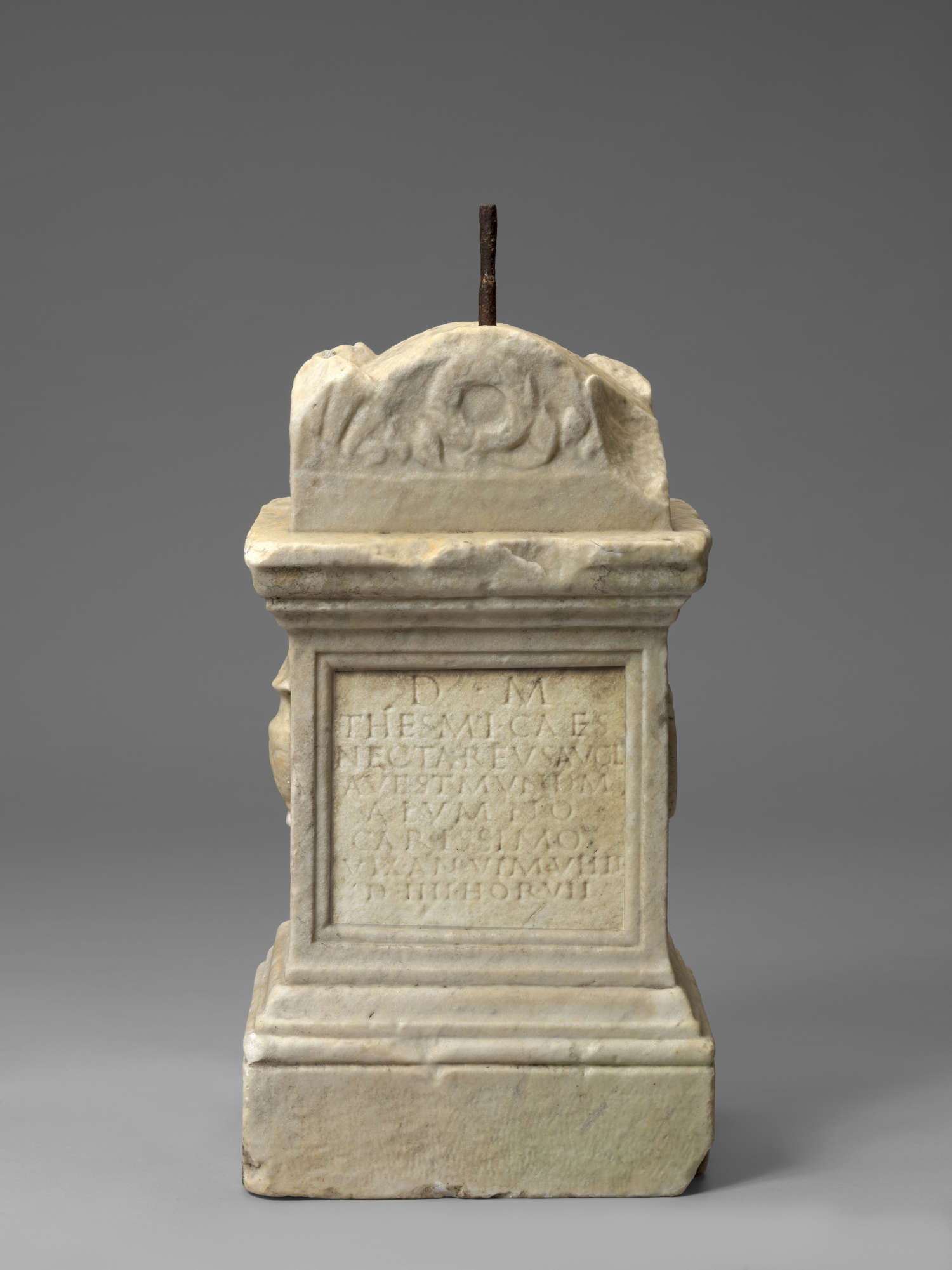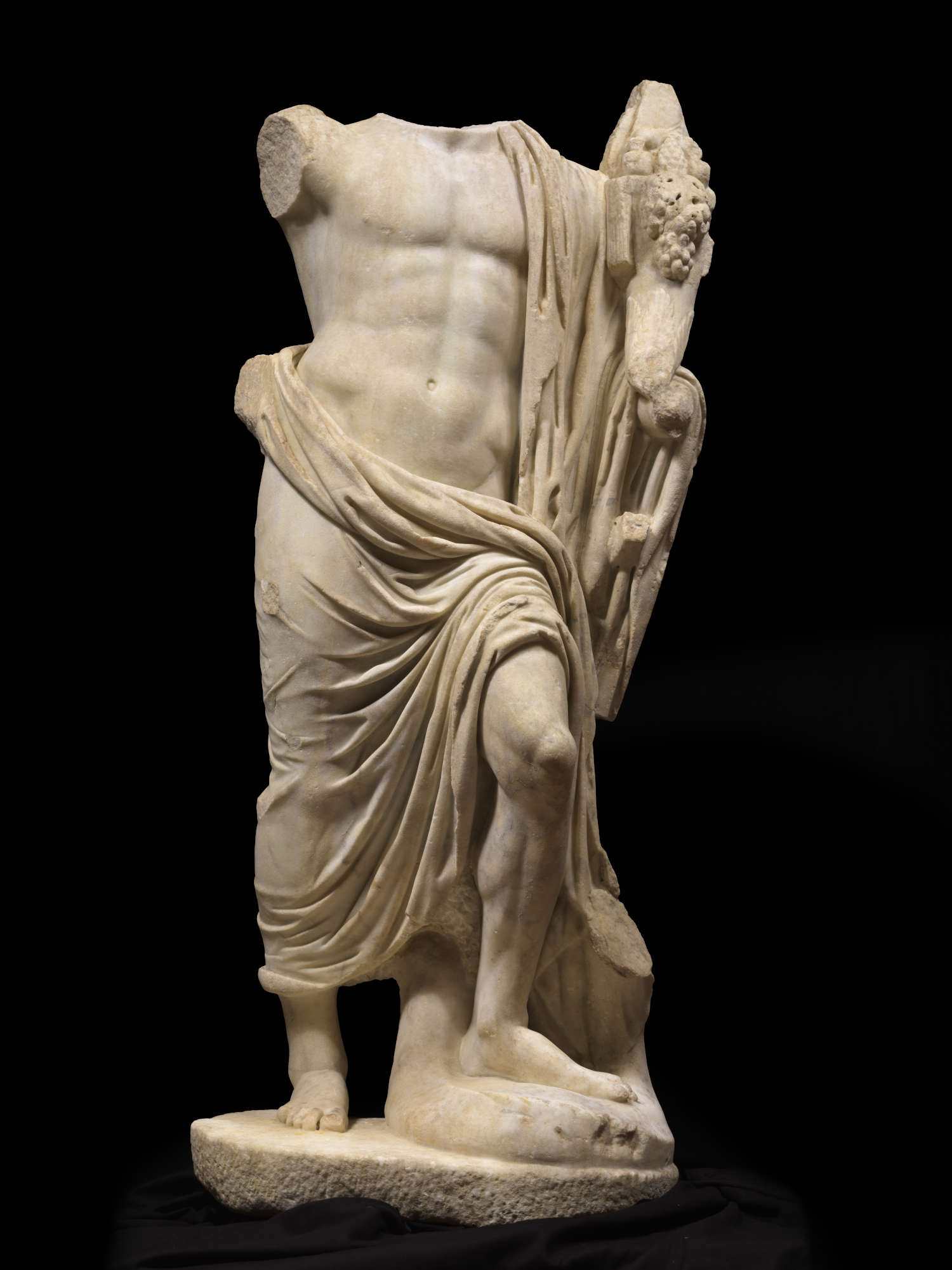How was Rome viewed by the Flemish artists who descended on Italy between the 16th and 17th centuries with the specific intention of observing, studying, and modeling our country and its historical and natural landscape? This is the question at the heart of the exhibition Aeterna. The Dream of Rome in Flemish Art between the 1500s and 1600s that the Caretto&Occhinegro gallery is organizing in the spaces of theAntonello Colonna Resort & SPA in Labico (Rome) from October 29, 2023 to January 7, 2024.
The exhibition starts from the assumption that, in the history of Western art, Rome, besides being a city with a millennial history, is also a concept. Everything flows into Rome or opposes it. The ancient Rome of the emperors, that of the popes, the city and its countryside, the Rome of artists. A multiform Rome that has shaped the imagery of artists. And to what extent, then, does the artistic idea of Rome have any bearing on reality? When does it turn into something different? The exhibition aims to investigate some of these aspects from a historical and critical point of view, through a series of case studies translated into a limited selection of works, chosen for their particular relationship of aesthetics and content with Rome.
The line of investigation is typical of the Caretto & Occhinegro Gallery, through Flemish paintings of the 16th and 17th centuries, exhibited for the first time in Italy and put in dialogue with archaeological finds from the Roman period. The exhibition is also enriched by site-specific installations created with the collaboration of Cavagnis Lacerenza Fine Art, an international gallery based in Milan, Italy’s leading specialist in classical antiquities and European sculpture. The exhibition also aims to be an opportunity to show a series of previously unseen works, brought back into direct dialogue after centuries, to discover a crucial chapter in art history. Among them is Frans Floris’s Judith with the Head of Holofernes, recently rediscovered by Caretto & Occhinegro and an exceptional addition to the important author’s catalog, flanked by the previously unseen Bonus Eventus statue, a monumental marble sculpture from the second century AD. The work, which Cavagnis Lacerenza had restored following a thorough campaign of study and research, adds an important piece in the history of collecting.
The project also aims to convey that same atmosphere of Rome-centered suggestions and mental projections that became a focus of research for Flemish artists between the 16th and 17th centuries. The focus on a drapery or Roman find, the gaze toward ancient ruins immersed in a forest, the concrete spatiality of a sacred drama, the Italianate drawing, all reinterpreted and re-proposed with Nordic eyes, in a process of transformation and constant palingenesis.





Before the Grand Tour (and worksite of ideas preparatory to it), therefore, Flemish artists were among the first “foreigners” to address the antiquity/classicality pair, understood as a two-story conceptual scaffolding, in which the entire peninsula was received both as a container/custodian of the splendors of an Empire lost in time, and as a place of rediscovery and revival of this greatness through the “modern manner” of the Italian Renaissance: not with uncritical adoration, but with sincere enthusiasm, with totally unpredictable outcomes.
Also present in the exhibition is a chapter devoted to Rome as a symbol of the Catholic world, with a very precise art, supported by rules opposite to those of the Protestant world. Finally, space is also given to the landscape, silent witness and theatrical backdrop for each of these events, in a fusion of nature and art that, already in the first decades of the 17th century, will give way to a specific genre of landscape thanks to Jan Brueghel the Elder. The excursus proposed by the exhibition is not meant to be didactic, but rather aimed at offering a critical framework through various works (or groups of works) that are configured as episodes of an investigation, a journey that is meant to persist in memory like a dream upon its own awakening: the dream of Rome.
“Two years after the first research project that we started at the Antonello Colonna Resort,” say Massimiliano Caretto and Francesco Occhinegro, “we are pleased to be able to present an exhibition that is the result of long and painstaking work, in the conviction that we can offer the Italian public a transversal and unprecedented focus, rich in critical insights and stimuli, which for us are the most important aspect in a review that aims to be first and foremost cultural.”
“This year,” explains Antonello Colonna, “there will be several events dedicated to the relationship between the world and Roman Antiquity, I am thinking for example of the major exhibition at the Galleria Borghese ’The Touch of Pygmalion. Rubens and Sculpture in Rome.’ Therefore, there was no more propitious moment to kick off this exhibition project, born from the partnership with Caretto&Occhinegro with the desire to give my friends and guests a cultural exhibition of absolute excellence and to give me a fitting celebration for the long road my family has traveled.”
“We are thrilled,” says the Cavagnis Lacerenza Gallery, "for the opportunity to participate in this exhibition project, which allowed us to offer a curated selection of works from classical antiquity, in dialogue with the Flemish world of the fifth and seventeenth centuries. We felt it was a perfect opportunity to present for the first time ever to the Italian public one of our recent and exceptional rediscoveries, a monumental marble figure of Bonus Eventus, which has been part of one of the most prestigious English collections of antiquities since the 18th century."
 |
| How Rome was seen by Flemish artists of the 1500s and 1600s: an exhibition of paintings and artifacts |
Warning: the translation into English of the original Italian article was created using automatic tools. We undertake to review all articles, but we do not guarantee the total absence of inaccuracies in the translation due to the program. You can find the original by clicking on the ITA button. If you find any mistake,please contact us.